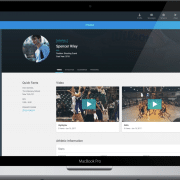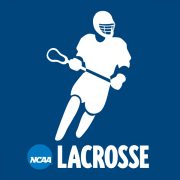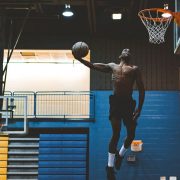I didnt feel like a college kid anymore. I felt like a pro that wasnt getting paid, said Jalen Rose, two-time NCAA basketball National Championship Game participant and critical member of the infamous 1992 Michigan Basketball team.
While playing Division Iacrosse may not come with the notoriety accompanied with DI basketball and initiating the Nike high-top black sneaker, college lacrosse at its highest level shares the pro feel that Rose alluded to.
The commitment that a student-athlete has to lacrosse at both the Division I and Division III levels dictates everything about the college experience. Lacrosse, just like any other sport, helps shape a student-athletes life academically and socially not just athletically. Using the perspective of National Champion Case Matheis, a rising sophomore Division I student-athlete at Duke University, in addition to my perspective on the Division III level after playing a year at Wesleyan University, I will outline the major differences that exist at these two distinct levels of competition. Through this article, I hope to provide you with the necessary facts to make an informed decision on what level of college lacrosse is most fitting for you.
Recruiting
Before getting into the college experience itself, it is important to understand how the recruiting process for each division is different.
As ridiculous as it sounds, players as young as 14 are committing to play lacrosse at the DI level. Yes, kids that do not even have a basic grounding in Geometry are making decisions that will likely affect the rest of their lives.
Whatever your thoughts are on early recruiting, this process that has begun to take place in Division I lacrosse is not necessarily a bad thing for the sport as a whole. While most successful DI programs keep spots for those players who develop later in their High School careers, many late bloomers fall through the cracks to historically less successful DI teams as well as DIII teams. Not only has this created a more level playing field at the highest level of college lacrosse, but the DIII level has also seen an influx of talent because of how extreme the recruiting process has become.
Look no further than former NESCAC standout Mike Stone (Middlebury 09), who has become a Major League Lacrosse All-Star and fan favorite in Boston as a member of the Cannons, serving as a testament to the talent present at the DIII level.
Recruiting at the Division III level occurs almost entirely during the summer leading up to a student-athletes senior year. At this point in the DI recruiting game, most recruiting slots still available are reserved for the remarkable athletes who tear up the summer circuit. Therefore, when your game develops into its fullest potential can directly affect your place in college lacrosses landscape.
Now that we have a better idea of the recruiting scene, we can examine the college experience itself, noting the differences that exist between the Division I and Division III levels. To accomplish this, we can examine the entire scope for what each aspect of school is like academically, athletically, and socially.
Academically
Division I lacrosse is a year-round commitment, in which all coaches can be present at all team practices and events from the fall through the spring. Meanwhile, at the Division III level coaches in the NESCAC are banned from all fall sessions and cannot attend any practices until February, thus placing responsibility on the teams captains to run the show. Outside of the NESCAC, coaches have a limited amount of practice days, but for the most part, the onus still falls on the players to work on their own.
Matheis provides terrific insight into how critical time management skills are as a student at a challenging institution such as Duke University. On balancing schoolwork with athletics, he notes, The biggest thing about academics and DI sports is that you are practicing every day and have to find the energy to come home late after practice and be able to do work. You are so focused on wanting to be successful in lacrosse that you need to be able to shift that focus at times into succeeding academically.
This full year commitment still exists at the DIII level, but with less organized practice responsibility in the fall, there is more time to shift your focus on academics. A typical fall week in the NESCAC at Wesleyan consists of four lacrosse sessions, with some combination of running and playing pick-up games, in addition to the three-day lifting program, which has to be done on your own. The extra time accumulated with less lacrosse allowed me to spend more time studying, writing papers, and finishing problem sets, in addition to working on the less developed aspects of my game individually. The old adage, champions are made when no one else is watching, applies directly to the DIII level, as great responsibility is placed on each individual to work on their game during their free time.
Athletically
Case mentions that Duke has a very demanding practice almost every day for the entirety of the school year - hence why they are now National Champions. Coaches orchestrate every practice from the fall through the spring in a very organized and efficient manner. With games in locations like Milwaukee, Wisconsin (Marquette University) and Indianapolis, Indiana (Site of the Elite Eight), the DI level begins to feel more like playing a professional sport. College lacrosse earns more TV-time than Major League Lacrosse, which only heightens this professional feel. I can only imagine that the autograph signings, large crowd attendance and private flights to select playoff games only boosted the pro feel as well.
At the DIII level, coaches attendance is limited (and non-existent in the NESCAC) in the fall. Thus, the responsibility falls on players and team captains to be sure the team is on the right track. February 15th, which serves as the official start date for NESCAC lacrosse, DIII begins to mimic the schedule of a DI athlete with practices almost every day and games twice a week. However, at a school like Wesleyan, each game is within driving distance and private flights are simply long bus rides. The Bird Cage, which serves as our home field, is not necessarily packed with thousands of rowdy fans either, but instead is filled with an intimate group of supportive friends and family.
Socially
Case articulates, You have to be wiling to make a large amount of social sacrifices. You get to hang out with your team all the time, which is awesome, but there is not a lot of time to be going out and enjoying yourself because on most weekends you are playing. Also, during the week you rarely go out because of how demanding practices and preparation is.
Sacrifices must be made for the greater good of the team, and one cannot keep up with the speed of the DI game without adequate rest and preparation. Fun is found within the memories you create with your teammates, and not necessarily in the typical college sense.
At Wesleyan, your social calendar is largely at your discretion, but there is an understanding that lacrosse is your first priority outside of academics. With less lacrosse activity, there is time in the fall to pick up an intramural sport, join a club, or pick up any other extracurricular activity. Some of my teammates and I decided to spend this extra time pledging a fraternity, adding a whole new dimension to the term team bonding.
However, the spring season and winter weeks leading up to it which serves as pre-season, is focused entirely on lacrosse. Nightlife is reserved only for post-victory celebration, which carries a different feel than any night spent out in the fall, knowing you have to get back to preparing for your next game.
Ultimately...
Ultimately, almost every youth players dream is to play lacrosse at the Division I level. This is an extremely high level of play, which every young player should aspire to be a part of. However, for those whose game developed a bit later than others or wanted more freedom through the fall before the season starts up, the Division III level provides an excellent alternative. The recruiting process has quickly made the talent at the two levels of play more comparable than it was a decade ago. College lacrosse may never gain the notoriety that college basketball players such as Jalen Rose had, but the incredible athletes at both the DI and DIII levels are definitely helping the cause.
Greg Pietroforte was the SR News intern in the summer of 2013. A rising sophomore at Wesleyan University at the time, Greg grew up in the New York City area. After graduating from Poly Prep High School, he decided to head to Westminster (CT) for a Post-Graduate year.











